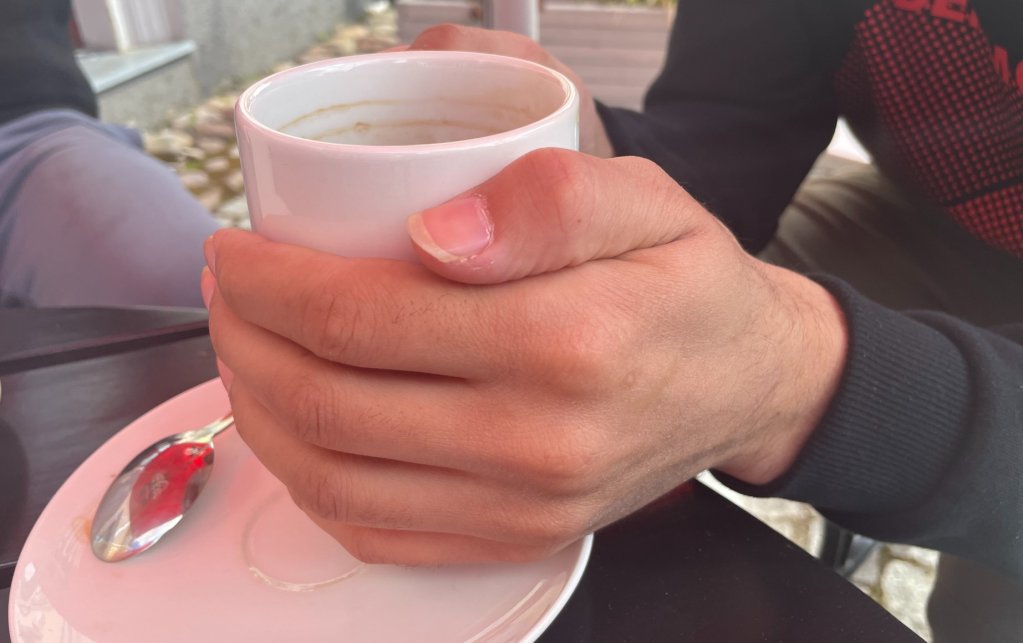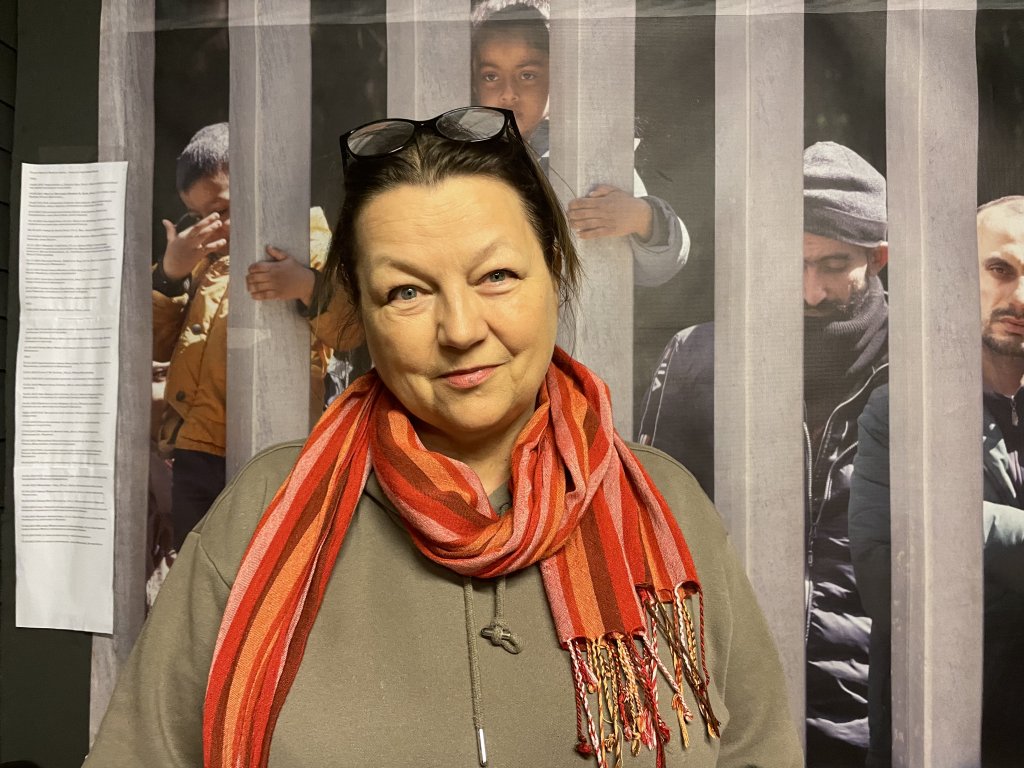After a dangerous journey across the Belarusian border into Poland, migrants Ali, Abdou and Benjamin were transferred to so-called "closed" migrant centers. At these structures, which resemble prisons, some migrants say they suffered serious psychological consequences.
Seated at an outdoor café, Ali* shivered in the bright sun. With a black hoodie pulled over his head, he firmly held onto a cup of steaming tea. The 25-year-old Iraqi was on a break from the Biala Podlaska migrant center, located in eastern Poland, where he'd been staying for the past 11 days and nights.
Following his arrest at the Belarusian border, the young man was placed in detention in a remote building surrounded by tall concrete walls, finding himself in a situation faced by thousands of migrants who have taken the same migratory route.

Migrants arrested at the Polish border and not pushed back into Belarus are taken to one of 16 reception centers -- open or closed -- for foreigners available in the country.
Ali was first taken to a closed center, managed by border guards, then to an open structure managed by the Immigration Office three days later.
According to official procedures, factors like country of origin, individual vulnerability and the possession (or lack thereof) of identification documents determine where these migrants are placed, said Katarzyna Zdanowicz, a spokesperson for the Polish Border Patrol.
For example, a Syrian national -- who cannot legally be expelled back to his country -- will be accommodated in an open center.
Also read: Italy to send migrants to reception centers in Albania
‘Locked up for 23 hours every day’
According to international standards on the right to asylum, people seeking protection should be received in open centers.
But InfoMigrants reporting indicates that in Poland, this isn't always the reality.
While the detention of asylum seekers is not "totally prohibited", European law "still imposes certain conditions", said Thibaut Fleury Graff, professor of public law at Paris's Panthéon University.
For example, "time constraints of two or three months maximum," he said.
Yet many asylum seekers are housed in closed centers for many months. Sometimes even "up to a year," said Joanna Jarnecka, a member of Polish NGO Grupa Granica.
In January 2023, four Iraqi migrants detained in Lesznowola staged a hunger strike to raise awareness about their situation after spending 17 months locked up in the center, according to the Polish news site Wyborcza.
Abdou* , another migrant who spoke with InfoMigrants, spent a total of five months in the closed centers of Biala Podlaska and Lesznowola, located near Warsaw.
"I didn’t understand why I was in this place, which looked like a prison, when I was asking for protection," he said. "I had never experienced confinement. Being deprived of liberty is unbearable. It was even harder than going through the forest."
Also read: Death and desperation is the cost of EU migration policies, MSF
The design and layout of certain centers resembles prison architecture, sources say. For example, the Bialystok and Przemyśl centers have thick, high walls topped with barbed wire and bars on the windows.
In a February 2024 report, which covered visits carried out in March 2022, the Anti-Torture Committee of the Council of Europe (CPT) "regretted that, despite its previous recommendations, the official minimum standard of 3 m² of living space per inmate (excluding sanitary facilities) is still not respected.”
"The vast majority of prisoners spend days and months in a state of idleness, without significant activity, locked in their cell for up to 23 hours a day," the CPT wrote.
According to Jarnecka, detention conditions have nevertheless improved since 2021 and the beginning of the humanitarian crisis.
"In the past, migrants sometimes told us about being victims of tasers, or being beaten by border guards. We no longer hear that. But confinement remains very problematic."
‘Once, I wanted to end it’
This interminable wait between four walls "threatens the mental health of asylum seekers,” said Maria Ksiazak, a psychologist who works in these facilities.
"These places of detention are very similar to those where certain exiles were detained in their country of origin, where they were subjected to torture. Under these conditions, how can you calmly share your memories, your history, during the interview to obtain asylum?”
“Detention psychologically destroys migrants," said Jarnecka. "They are locked up all day long with their trauma and they dwell on their memories. Their suffering only grows, sometimes reaching the point of irreparability.”
According to humanitarian workers, suicide attempts are frequent inside closed centers.
Placed in an open center for three months, and then in a closed one for additional months despite his age, Benjamin*, a 16-year-old Cameroonian, remembered "days when things really weren't going well at all."
"We were told that we are not in prison, even though it’s the same: we would get up at a fixed time, we would always eat lunch at the same time, we would go out into the courtyard. Feeling like a criminal even though I hadn't done anything wrong, I found it so unfair,” he said. "I admit that once, I wanted to put an end to it.”
For Abdou, "the hardest part was the loneliness: every day, at night, I never thought I would suffer so much in my head ... I prefer never to talk about this again."
"I sometimes get called to the hospital because one of them tried to end their lives," said Ksiazak. "Every week, I spend long hours on the phone with some of the most vulnerable ones, trying to get them to hang onto life."

When asked about these claims, border guard spokesperson Zdanowicz raised her eyebrows.
"These are things people advise them to say, to attract the attention of journalists. These people are not always in the mental state that they claim to be in," she said.
Since his release four months ago, Benjamin is still waiting for a response to his request for protection. He feels he is “coming back to life, little by little."
He is now part of an international class in a college in Warsaw, where he savors moments with his Afghan, Georgian and Ukrainian comrades. "When I'm at school, I forget everything, I have the impression of having a normal life. When I find myself alone, at home, it's much more difficult. Suddenly, all my dark thoughts come rushing back.”
*All first names have been changed to protect their identities
Marlène Panara traveled recently to the Polish-Belarusian border
Read more: Achylle's tale: 'I have tried to kill myself three times'
